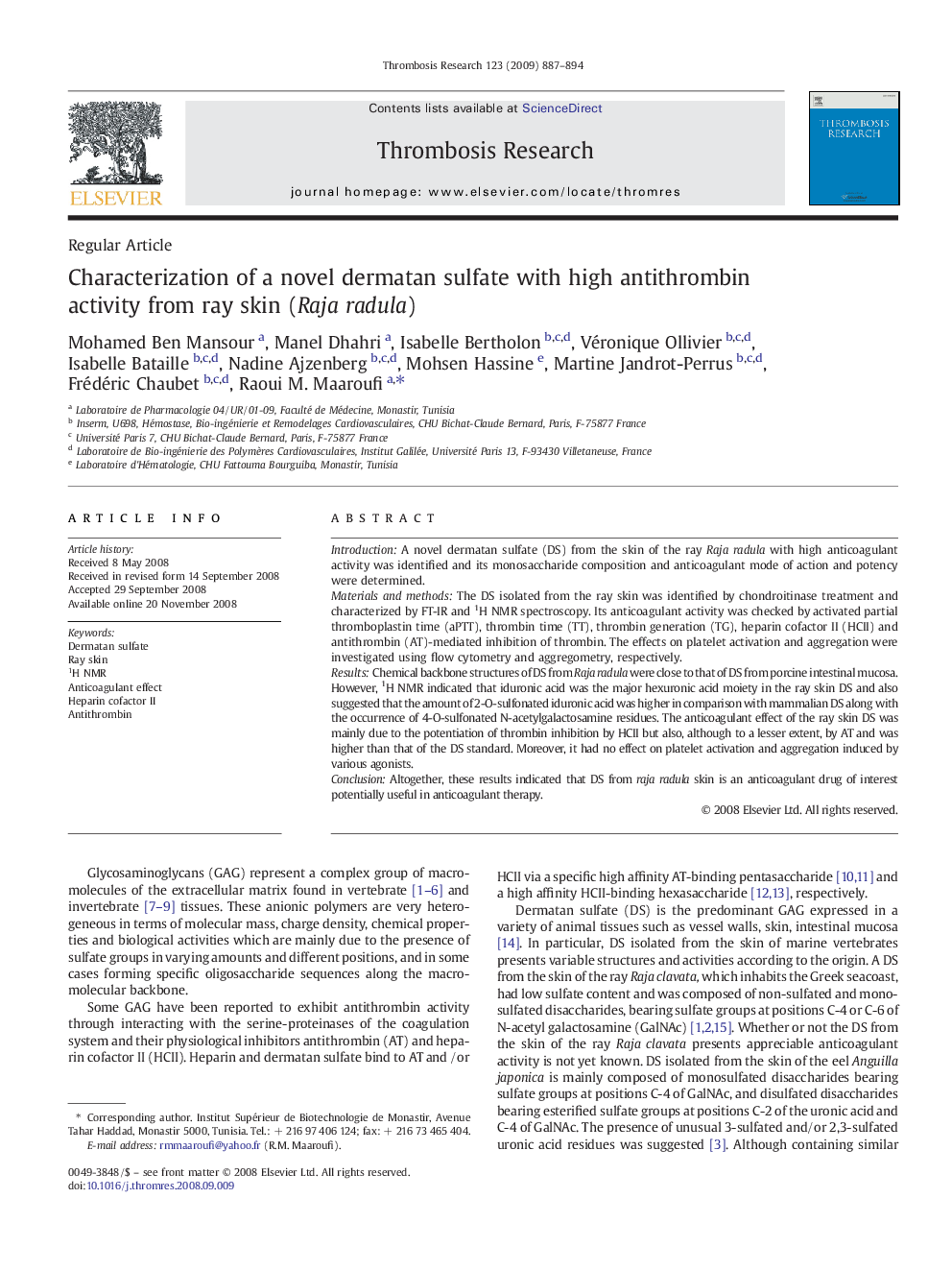| Article ID | Journal | Published Year | Pages | File Type |
|---|---|---|---|---|
| 3028394 | Thrombosis Research | 2009 | 8 Pages |
IntroductionA novel dermatan sulfate (DS) from the skin of the ray Raja radula with high anticoagulant activity was identified and its monosaccharide composition and anticoagulant mode of action and potency were determined.Materials and methodsThe DS isolated from the ray skin was identified by chondroitinase treatment and characterized by FT-IR and 1H NMR spectroscopy. Its anticoagulant activity was checked by activated partial thromboplastin time (aPTT), thrombin time (TT), thrombin generation (TG), heparin cofactor II (HCII) and antithrombin (AT)-mediated inhibition of thrombin. The effects on platelet activation and aggregation were investigated using flow cytometry and aggregometry, respectively.ResultsChemical backbone structures of DS from Raja radula were close to that of DS from porcine intestinal mucosa. However, 1H NMR indicated that iduronic acid was the major hexuronic acid moiety in the ray skin DS and also suggested that the amount of 2-O-sulfonated iduronic acid was higher in comparison with mammalian DS along with the occurrence of 4-O-sulfonated N-acetylgalactosamine residues. The anticoagulant effect of the ray skin DS was mainly due to the potentiation of thrombin inhibition by HCII but also, although to a lesser extent, by AT and was higher than that of the DS standard. Moreover, it had no effect on platelet activation and aggregation induced by various agonists.ConclusionAltogether, these results indicated that DS from raja radula skin is an anticoagulant drug of interest potentially useful in anticoagulant therapy.
